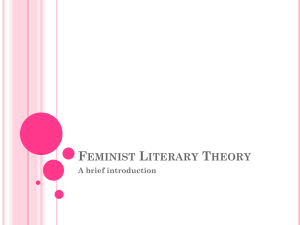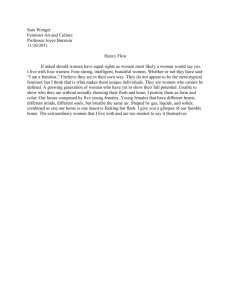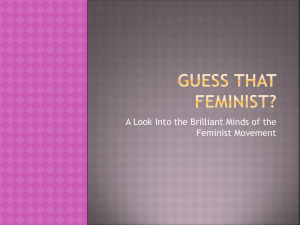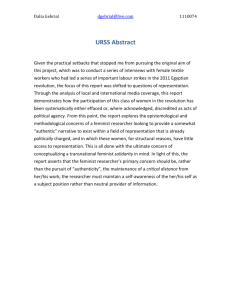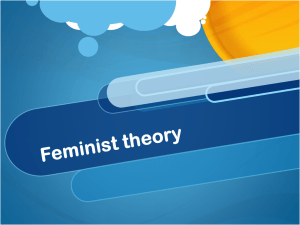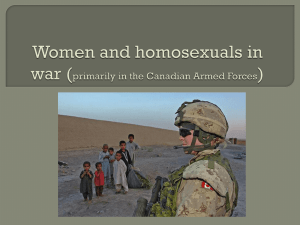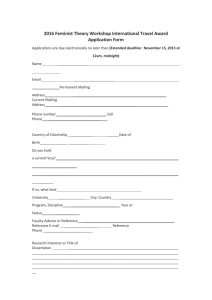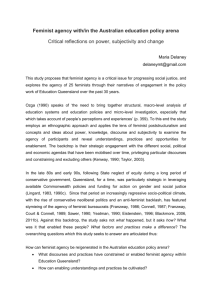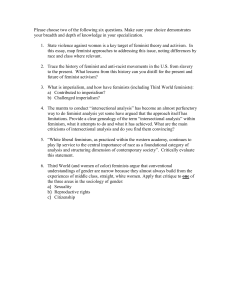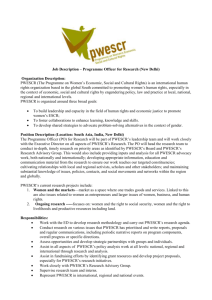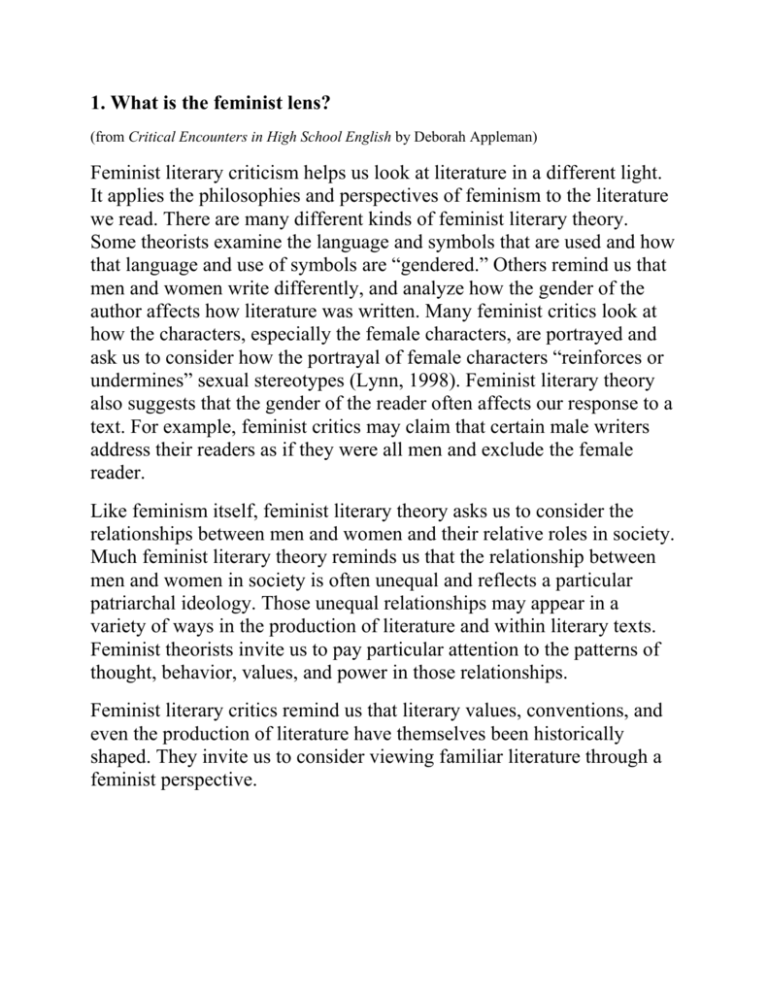
1. What is the feminist lens?
(from Critical Encounters in High School English by Deborah Appleman)
Feminist literary criticism helps us look at literature in a different light.
It applies the philosophies and perspectives of feminism to the literature
we read. There are many different kinds of feminist literary theory.
Some theorists examine the language and symbols that are used and how
that language and use of symbols are “gendered.” Others remind us that
men and women write differently, and analyze how the gender of the
author affects how literature was written. Many feminist critics look at
how the characters, especially the female characters, are portrayed and
ask us to consider how the portrayal of female characters “reinforces or
undermines” sexual stereotypes (Lynn, 1998). Feminist literary theory
also suggests that the gender of the reader often affects our response to a
text. For example, feminist critics may claim that certain male writers
address their readers as if they were all men and exclude the female
reader.
Like feminism itself, feminist literary theory asks us to consider the
relationships between men and women and their relative roles in society.
Much feminist literary theory reminds us that the relationship between
men and women in society is often unequal and reflects a particular
patriarchal ideology. Those unequal relationships may appear in a
variety of ways in the production of literature and within literary texts.
Feminist theorists invite us to pay particular attention to the patterns of
thought, behavior, values, and power in those relationships.
Feminist literary critics remind us that literary values, conventions, and
even the production of literature have themselves been historically
shaped. They invite us to consider viewing familiar literature through a
feminist perspective.
Questions Feminist Critics Ask:
1.
Have female authors been intentionally (or not) left out of the
canon?
2.
How is a character’s experience different because of sex?
3.
How do female authors portray their characters similarly or
differently from male authors?
4.
Is this essentially feminine?
5.
Ask: Who has the power?
6.
What are the societal norms?
7.
Nature or nurture?
8.
How is the language itself masculine or not?
9.
Is there sexual envy? Is it power envy?
10. Does it matter who the author is? Does the social, societal, or
cultural context matter?
11. How is a text traditionally interpreted?
3. How do we apply the feminist lens?
We apply it by closely examining the portrayal of the characters, both
female and male, the language of the text, the attitude of the author, and
the relationship between the characters. We also consider the comments
the author seems to be making about society as a whole. Let's try to
interpret the following concrete poem in two ways, from a traditional
perspective and from a feminist perspective:
This poem is by Pedro Xisto and was
published in 1966

